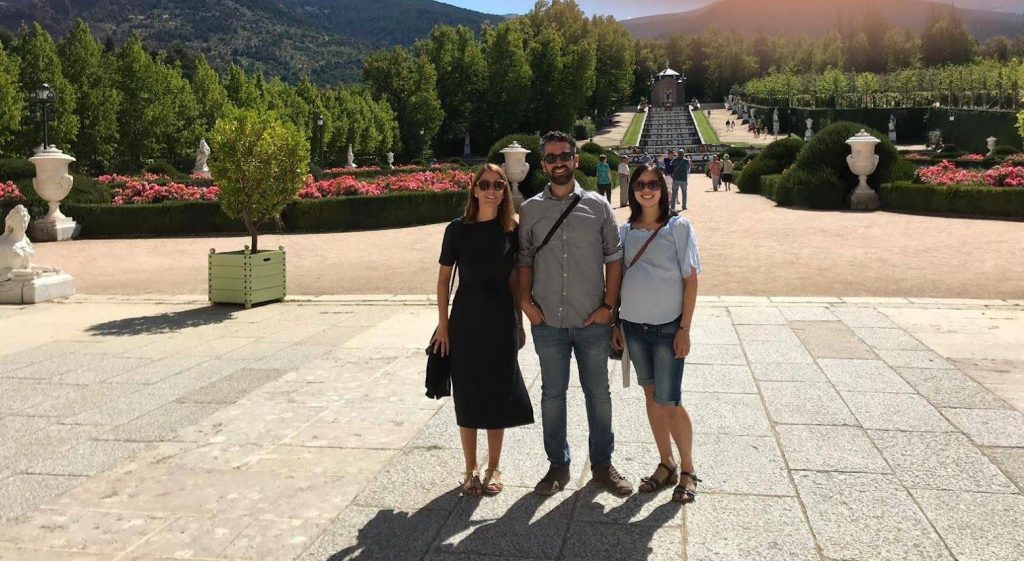Veronica Lo

Photo: Veronica Lo
Two years ago, colleagues and I were corresponding about the exciting work we were undertaking in the beautiful Sierra de Guadarrama National Park, Spain. Under the ENVISION project, we had completed a first round of interviews with community stakeholders to understand perceptions of landscape changes and their drivers, and how they might be integrated into protected areas management to deal with current and future change. Little did we know that a seismic change was coming – a global pandemic would put a monkey wrench into all of our respective research plans and thwart any future attempts for our international team to meet in person.
Of course, research meetings seemed like frivolous concerns in the overall picture as the pandemic has carved its devasting path across the world, measured in deaths, severe illness, and impacted livelihoods and economies. We were lucky to have our lives and livelihoods intact, but the same could not be said for the community we were targeting. The mountainous Sierra de Guadarrama National Park stretches across the two autonomous provinces of Madrid and Castilla y León. Madrid, the location of the nation’s capital and the most populous province in Spain, was the most affected area in one of the countries hardest-hit by the first wave of the pandemic.
Still, we thought it was worth asking: what happens to a vision for management when a wildcard event like a pandemic occurs? Scores of literatures now demonstrate the contribution of green spaces and protected areas to our physical and mental health and well-being. There is growing evidence of how people have valued green spaces during the pandemic for outdoor recreation and social bonds (e.g. Day 2020; Ugolini et al. 2020; Xie et al. 2020; Korpilo et al. 2021). Understanding how patterns of use, values for nature, and visions for management shift for protected areas when faced with global shocks can help policymakers and stakeholders learn from these events and create adaptive management plans.
Our research design also required adaptive management, and rather than follow-up with in-person interviews as planned, we conducted a virtual workshop one year later, in the midst of the second wave of the pandemic, to elicit stakeholder values, perceptions of landscape change and visions for park management. In a region scarred by the pandemic, we had to carefully choose how to pose our questions in order to prevent further trauma. We did this via posing sensitive questions in an individual follow-up survey rather than in an open deliberative setting.[1]
Our research yielded interesting results. Pre-pandemic, we found that stakeholder values and perceptions of landscape changes were strikingly similar across different types of visions. Differences in stakeholder visions for management were instead largely shaped by the varying importance placed on different drivers of change. Mid-pandemic, those values and visions for management were largely stable, with values being re-affirmed in some cases. Where values changed, they shifted towards an appreciation of the park as a means to realize values of outdoor recreation and social bonds during periods of lockdown which restricted activities in enclosed spaces outside of homes. There were more pronounced changes regarding perceived drivers of change in the national park. These varied with different phases of the lockdown period, including the observed recovery of nature from tourism when visits to the park were restricted, and, on the other end of the spectrum, mass tourism and mountain recreation when lockdown policies were lifted.
Our findings reinforce the importance of adaptive and inclusive management of protected areas. Integrating local and traditional knowledge and stakeholder perceptions of changes and drivers can enhance management strategies, such as using local knowledge of controlled grazing practices to reduce the risk of wildfires. As it becomes clear that the pandemic is far from over and continues to restrict indoor gatherings and re-introduce lockdown policies, it would be prudent to more strongly consider how to manage parks with varying fluxes of visitors and their resultant impacts on biodiversity and natural and cultural features.
Lo, V. B. P. G., López-Rodríguez, M. D., Metzger, M. J., Oteros-Rozas, E., Cebrián-Piqueras, M. A., Ruiz-Mallén, I., March, H., & Raymond, C. M. (2022) How stable are visions for protected area management? Stakeholder perspectives before and during a pandemic. People and Nature. https://doi.org/10.1002/pan3.10292
[1] See Santana et al. 2021 for insights on qualitative sustainability research during the COVID-19 pandemic.

Researchers María D. López-Rodríguez, Miguel A. Cebrián Piqueres, and Veronica B.P.G Lo (L-R) enjoying a walk in the gardens of the Royal Palace of La Granja de San Ildefonso, at the foot of the Sierra de Guadarrama mountains.
About the Author
Veronica Lo is a researcher at the Swedish University of Agricultural Sciences, Sweden. From January 2022, she will be a post-doctoral researcher at the University of British Columbia, Vancouver, Canada. She will also continue as a valued adjunct in the Human-Nature Transformations Research Group, University of Helsinki.
Funding
This research was funded through the 2017-2018 Belmont Forum and BiodivERsA joint call for research proposals, under the BiodivScen ERA-Net COFUND programme, and with the funding organizations the Swedish Research Council for Sustainable Development (FORMAS), University of Helsinki, and PCI2018-092958/Spanish Research Agency (AEI), in addition to the financial support of the Spanish Research Agency (RYC-2015-17676) and Spanish Ministry of Science, Innovation and Universities (IJCI-2017-34334).
References
Day, B. H. The Value of Greenspace Under Pandemic Lockdown. Environ Resource Econ 76, 1161–1185 (2020).
Korpilo, S. et al. Coping With Crisis: Green Space Use in Helsinki Before and During the COVID-19 Pandemic. Frontiers in Sustainable Cities 3, 99 (2021).
Santana, F. N. et al. A path forward for qualitative research on sustainability in the COVID-19 pandemic. Sustain Sci (2021) doi:10.1007/s11625-020-00894-8.
Ugolini, F. et al. Effects of the COVID-19 pandemic on the use and perceptions of urban green space: An international exploratory study. Urban Forestry & Urban Greening 56, 126888 (2020).
Xie, J., Luo, S., Furuya, K. & Sun, D. Urban Parks as Green Buffers During the COVID-19 Pandemic. Sustainability 12, 6751 (2020).